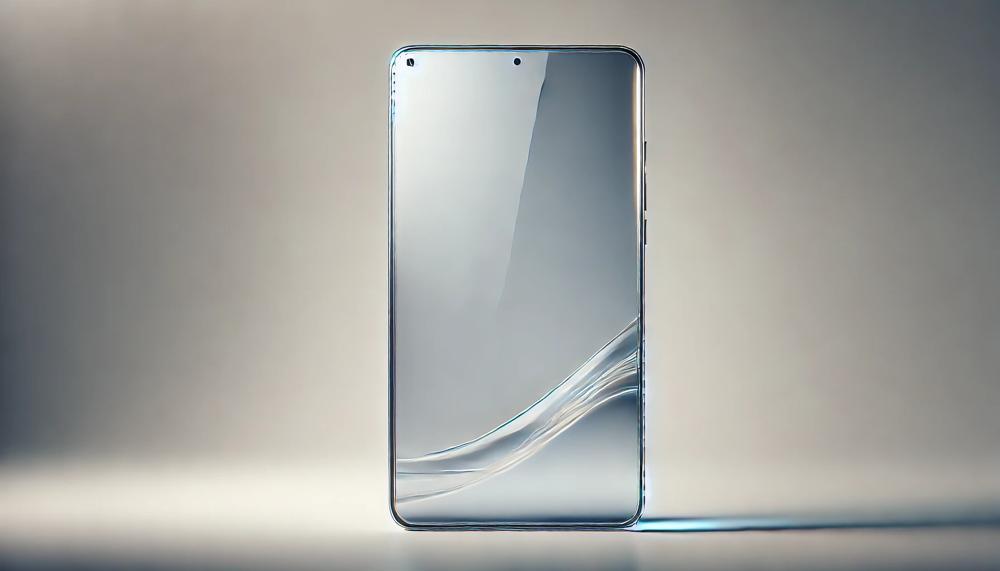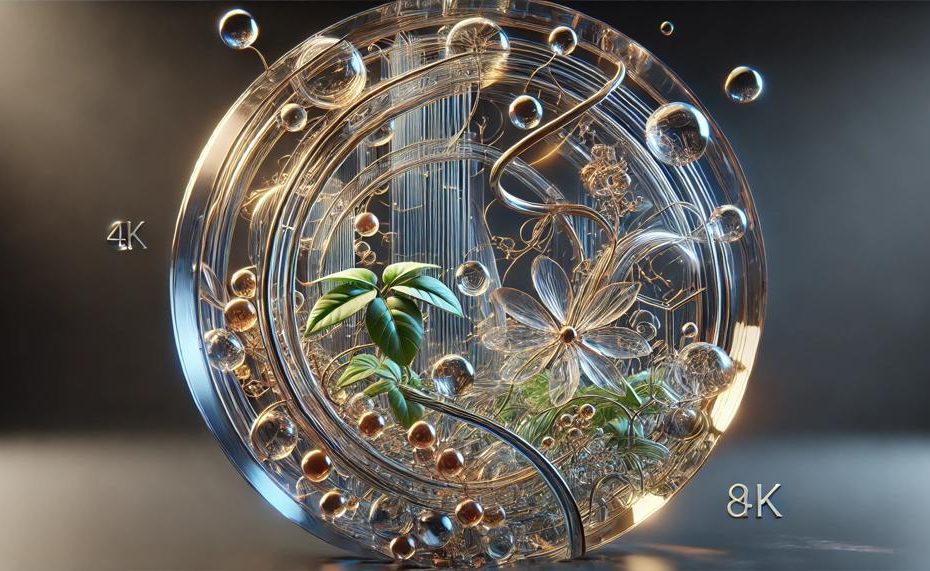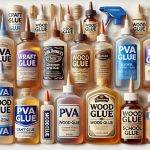Gluing plexiglass can seem tricky at first, but it’s straightforward with the right steps and tools. Here’s the essential guide to get you started on bonding plexiglass effectively.
To glue plexiglass together, follow these steps:
- Clean the Plexiglass: Wash both pieces with mild soap and water, then dry them thoroughly. This removes any dust, grease, or residues that could affect the bond.
- Fit the Pieces: Ensure the plexiglass pieces fit snugly together. Secure them with masking tape or clamps to hold them in place during gluing.
- Apply the Glue: Use a 25 gauge syringe to apply methylene chloride glue to the joint. This type of glue creates a strong, clear bond by dissolving the plexiglass surfaces and fusing them together.
- Set Time: Allow the glue to set for 24-48 hours. This curing period is crucial for achieving a durable bond.
- Finish the Joint: After the glue has set, use fine-grit sandpaper to smooth out any rough patches along the joint, ensuring a clean, professional finish.
Key Takeaways:
- Proper Cleaning: Essential for a strong bond.
- Snug Fit: Ensures effective gluing and alignment.
- Correct Glue Application: Methylene chloride glue is preferred for plexiglass.
- Patience with Setting Time: Critical for bond strength.
- Finishing Touches: Smoothing joints for aesthetics and safety.
By following these steps, you’ll achieve a reliable and professional-quality bond with your plexiglass projects, making them both durable and visually appealing.
Table of Contents
Plexiglass Adhesive Guide
When selecting the optimal adhesive for bonding plexiglass, it’s vital to consider several critical factors to ensure a robust and clear bond. Here’s a detailed guide to help you make the best choice:

| Factor | Description | Recommendation |
| Bond Strength | The adhesive must create a strong, durable bond that can withstand stress and environmental conditions. | Acrylic-based adhesives like Weld-On 3 or Weld-On 4 are highly recommended for their superior strength and durability. |
| Drying Time | The time it takes for the adhesive to cure fully affects project speed and handling. | Fast-drying adhesives, such as cyanoacrylate (super glue), are suitable for quick fixes, while acrylic glues offer a balance of workability and strength. |
| Final Appearance | A clear, invisible bond is often essential for aesthetic purposes, especially in display items or aquariums. | Solvent-based adhesives like methylene chloride provide a clear finish, making the joints nearly invisible. |
| Application Method | Ease of application can vary with different adhesives. Consider whether you need a brush, syringe, or applicator. | Acrylic glues often come with applicators that allow precise application, reducing mess and waste. |
| Safety and Handling | Some adhesives emit strong fumes or require careful handling due to toxicity. | Ensure proper ventilation and use personal protective equipment when working with solvent-based and acrylic adhesives. |
Tips for Effective Bonding:
- Preparation: Clean the plexiglass surfaces thoroughly with mild soap and water. Any dirt or grease can weaken the bond.
- Fit and Secure: Fit the pieces together snugly and use masking tape or clamps to hold them in place during curing.
- Application: Use a fine applicator like a 25 gauge syringe for precision, especially with liquid solvents like methylene chloride.
- Curing: Allow ample time for the adhesive to cure—typically 24-48 hours for solvent-based glues. Do not disturb the bond during this period.
- Finishing: After the bond sets, use fine-grit sandpaper to smooth any rough edges.
By considering these factors and following these tips, you can ensure a strong, clear, and professional bond when working with plexiglass.
Preparation for Bonding Plexiglass
To ensure a strong and durable adhesive bond when preparing plexiglass, follow these key steps:
Choose the Right Adhesive:
Select a specialized adhesive formulated for Plexiglass, such as cyanoacrylates, epoxy adhesives, or solvent cement. These are designed to work with the material’s low surface energy.
Surface Cleaning:
Clean the surfaces of the Plexiglass thoroughly to remove any grease, dirt, or fingerprints.
Use a mild detergent and water, followed by wiping with isopropyl alcohol for a spotless finish.
Surface Preparation:
Lightly sand the bonding areas with fine-grit sandpaper (e.g., 400-600 grit) to create a rough texture, which helps the adhesive adhere better.
Clean the dust with a soft, lint-free cloth.
Proper Alignment:
Carefully align the Plexiglass pieces before applying the adhesive. Use clamps or weights to hold the pieces in place to prevent shifting during the curing process.
Adhesive Application:
Apply the adhesive sparingly and evenly across the bonding surface. Avoid excess adhesive buildup to prevent overflow and mess. Use a fine applicator like a syringe for precise application.
Clamping and Curing:
Firmly clamp the Plexiglass pieces together and allow the adhesive to cure as per the manufacturer’s instructions. This typically involves letting it set undisturbed for several hours to achieve maximum bond strength.
Troubleshooting Common Issues:
Address any issues such as air bubbles or uneven bonding by gently sanding and reapplying adhesive if necessary. Double-check compatibility of materials if problems persist.
Glue Plexiglass to Plexiglass: Step-by-Step
To effectively glue two pieces of plexiglass together, follow these detailed steps:
Choose the Right Adhesive
- Acrylic Cement: Ideal for plexiglass, creates a strong, clear bond.
- Epoxy Resin: Useful for larger surfaces, provides a robust bond.
Prepare the Surfaces
- Cleaning: Remove dust, grease, and fingerprints using a mild detergent and water, followed by a wipe with isopropyl alcohol.
- Sanding: Lightly sand the bonding areas with fine-grit sandpaper (e.g., 320-grit) to create a rough surface for better adhesion.
Align the Pieces
- Use clamps or a jig to ensure precise alignment. Proper alignment is crucial as misalignment can weaken the bond.
Apply the Adhesive
- Acrylic Cement: Use a needle applicator to apply a thin line of cement along the edge. Capillary action will draw the cement into the joint.
- Epoxy Resin: Mix according to the manufacturer’s instructions and apply a thin, even layer on both surfaces.
Clamping
- Gently clamp the pieces together to avoid bubbles and ensure an even distribution of adhesive. Avoid overtightening as it may cause stress fractures.
Curing Time
- Allow the adhesive to cure as per the manufacturer’s recommendations, usually 24 to 48 hours, for maximum strength.
Troubleshooting Common Issues
- Bubbles: To minimize bubbles, apply adhesive slowly and evenly.
- Misalignment: Double-check alignment before adhesive application.
Using a Primer
- For an even stronger bond, consider using a primer designed for plexiglass before applying the adhesive. This helps enhance adhesion, especially in high-stress applications.
By following these steps, you can achieve a durable and clear bond between two pieces of plexiglass.
Plexiglass Joining Techniques
To join plexiglass effectively, there are several techniques that can be employed, each with its unique benefits and applications:
Solvent Welding
Solvent welding is one of the most common methods for joining plexiglass.
This technique uses a solvent, such as methylene chloride or a special acrylic cement, which softens the surfaces of the plexiglass, allowing them to fuse together when pressed.
This method creates a strong, nearly invisible bond.
- Steps:
- Clean the surfaces to be joined.
- Apply the solvent evenly using a syringe or brush.
- Press the pieces together and hold them in place until the bond sets.
Mechanical Fastening
Mechanical fastening involves using screws, bolts, or other hardware to join plexiglass pieces. This method is advantageous for applications requiring disassembly or adjustments.
Steps:
- Drill pilot holes in the plexiglass to prevent cracking.
- Use appropriate fasteners, such as nylon bolts, to avoid stress.
- Add washers to distribute the load and prevent damage.
Adhesive Bonding
Adhesive bonding uses special adhesives designed for plexiglass, such as acrylic glues or cyanoacrylate (super glue). These adhesives create a strong, durable bond suitable for various applications.
Steps:
- Clean and sand the surfaces to ensure good adhesion.
- Apply the adhesive according to the manufacturer’s instructions.
- Clamp the pieces together to avoid movement until the adhesive cures.
Thermal Bonding
Thermal bonding involves heating the plexiglass pieces until they become soft enough to fuse together. This technique requires precise control of temperature to avoid damaging the material.
Steps:
- Heat the edges to be joined using a specialized heating tool.
- Press the softened edges together and hold until cool.
- Ensure the joint is smooth and free of air bubbles.
Ultrasonic Welding
Ultrasonic welding uses high-frequency ultrasonic vibrations to generate heat at the interface of the plexiglass pieces, causing them to melt and fuse together. This technique is commonly used in industrial applications.
Steps:
- Align the plexiglass pieces in the ultrasonic welding machine.
- Apply the ultrasonic vibrations to the joint area.
- Allow the pieces to cool and solidify.
Clear Plexiglass Adhesive: Application Tips
Applying clear adhesive to plexiglass can be a precise task, but following these essential tips ensures a strong and durable bond:
Choose the Right Adhesive
Selecting the appropriate adhesive is crucial. For plexiglass, options like E6000, Weld-On, or methylene chloride are ideal due to their strong bonding properties.
| Adhesive Type | Features | Usage |
| E6000 | Strong, flexible, waterproof | Ideal for both indoor and outdoor applications |
| Weld-On | Quick setting, strong bond | Best for structural applications |
| Methylene Chloride | Solvent-based, fast curing | Suitable for tight-fitting joints |
Surface Preparation
Properly preparing the surfaces ensures maximum adhesion. Clean the plexiglass pieces with mild soap and water, then dry them thoroughly. Removing any dust, oil, or debris is essential.
Roughen the Surfaces
Lightly roughen the bonding surfaces with fine-grit sandpaper. This helps create a better grip for the adhesive, enhancing the overall bond strength.
Application Technique
Apply the adhesive slowly and carefully to avoid air bubbles. Using a 25-gauge syringe can help control the application, especially for solvent-based adhesives like methylene chloride.
Follow Manufacturer’s Instructions
Always adhere to the specific instructions provided by the adhesive manufacturer. This includes recommended curing times and application methods.
Curing Time
Allow sufficient curing time before applying any stress or pressure to the bonded plexiglass.
Typically, this can range from 24 to 48 hours. Rushing this step can weaken the bond.
Secure the Pieces
Fit the plexiglass pieces together snugly and secure them with masking tape or clamps.
This ensures they stay in place during the curing process.
Post-Curing Finishing
After the adhesive has cured, use fine-grit sandpaper to smooth any rough edges around the joint. This not only improves the appearance but also ensures a seamless finish.
Plexiglass Repair and Maintenance
To repair scratches on plexiglass surfaces, several methods can be employed based on the depth and severity of the scratches. Here are the most common and effective techniques:
Assessing Scratch Depth
Firstly, determine the depth of the scratches. Surface scratches can be repaired, but scratches deeper than 5mm are usually irreparable and might require replacement of the plexiglass panel.
Methods for Repairing Scratches
Cleaning the Surface
Clean the scratched area with water or an acrylic cleaner to remove any dirt or debris. This prepares the surface for further treatment.
Using a Buffing Compound
- Materials Needed: Buffing compound, soft cloth, power buffer (optional).
Steps:
- Apply a small amount of buffing compound to the scratched area.
- Use a soft cloth or a power buffer to gently buff the surface in circular motions.
- Continue buffing until the scratch is no longer visible.
This method works well for minor surface scratches.
Acrylic Polish
- Materials Needed: Acrylic polish, microfiber cloth.
Steps:
- Apply the acrylic polish to the scratch.
- Use a microfiber cloth to polish the area in small, circular motions.
- Repeat until the scratch is minimized or disappears.
Acrylic polish helps in restoring the smoothness and clarity of the plexiglass.
Repairing Deeper Scratches and Minor Cracks
For scratches deeper than the surface level but less than 5mm, and minor cracks:
Acrylic Solvent Cement
- Materials Needed: Acrylic solvent cement, applicator syringe.
Steps:
- Apply the solvent cement directly to the crack or deeper scratch using an applicator syringe.
- Allow it to cure as per the manufacturer’s instructions.
- Sand the area gently and polish to restore shine.
This method effectively bonds and fills deeper imperfections.
Plexiglass Patch for Larger Cracks
- Materials Needed: Plexiglass patch, solvent cement, sandpaper, plastic polish.
Steps:
- Cut a patch from a spare piece of plexiglass.
- Apply solvent cement to both the patch and the cracked area.
- Press the patch firmly onto the crack and let it cure.
- Sand the edges smoothly and polish the area to blend the patch with the rest of the surface.
Conclusion
Successfully gluing plexiglass is a methodical process that transforms a tricky task into an achievable feat with precision and patience. Here’s how to master this craft and ensure professional results every time.
Begin by thoroughly cleaning your plexiglass pieces with mild soap and water to eliminate any dust or grease that could interfere with the bond. Dry the surfaces completely before proceeding. Next, fit the pieces together carefully, securing them with masking tape or clamps to maintain perfect alignment throughout the process.
The choice of adhesive is crucial. Methylene chloride glue is the preferred option due to its ability to dissolve the plexiglass surfaces and create a strong, clear bond. Utilize a 25 gauge syringe for precise application along the joint. This step is delicate, requiring a steady hand to avoid excess glue and ensure an even spread.
Patience is your ally here. Allow the glue to set undisturbed for 24-48 hours. This curing period is essential for achieving a durable bond. Once the adhesive has fully cured, use fine-grit sandpaper to smooth any rough edges along the joint, enhancing both the aesthetics and safety of your project.
The key takeaways for a successful plexiglass bonding project include meticulous cleaning, precise fitting, careful glue application, allowing ample curing time, and finishing touches for a seamless look.






